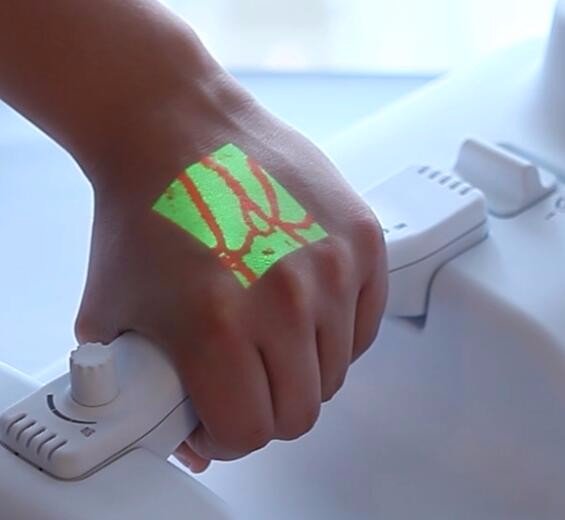
Imaging technologies are continuously improving. In some cases, imaging advancement allows for enhanced diagnostics, such as using a CT scan to classify a tumor. However, imaging advancements are also showing promise as a way to improve patient experience at the time of the procedure. In particular, their benefits are being showcased in the blood work field to expedite the blood drawing or IV placement experience and reduce patient discomfort.
One of the most common complaints when receiving blood work is the number of tries it takes to get the needle into the vein. Some people never experience this problem, but many know the challenge that comes with blood work all too well. With the many factors that can affect vein size, such as hydration level and genetics, inserting the needle correctly can be difficult, especially if the person drawing the blood is still relatively new in the field. Practice may make perfect, but that doesn’t mean you want to offer your arm as the practice pin cushion.
A Way to Improve Vein Visualization
To help make the process of blood drawing smoother, vein visualizers provide a way for phlebotomists to see the veins more easily. Not only does this aid in placing the needle, but it also helps them place the needle in the best vein.
One auspicious method of vein visualization utilizes near-infrared imaging technology, which is commonly used in smartwatches to measure blood oxygen saturation. It’s painless but can provide important information.
Near-infrared imaging technology utilizes near-infrared light directed into the skin. The near-infrared light is then absorbed by the blood but reflected by the surrounding tissue. These vein finder devices can then capture, process, and digitally projected onto the skin’s surface, showing where the veins are.
Not only does this benefit those who have a hard time finding the vein, but these devices can also be immensely beneficial in an emergency when inserting an IV needs to be done quickly, and time cannot be wasted on multiple placement attempts.
Relief for a Significant Population Group
Patients who significantly benefit from vein finders are those who the medical industry terms “difficult sticks”. The usage of this name means no harm; it’s simply a fact that those who are older, overweight, agitated, or in a hurry and those with diabetes, severe burns, or IV drug use typically have veins that are harder to find and stick.
By making the needle placement process easier and faster through the usage of vein finders, the experience of these patients improves; they don’t experience as much pain, discomfort, and agitation.
In addition, many people may choose to forego regular blood work if they know, from experience, that it will not be pleasant. With early detection one of the keys to successful treatment of many diseases, this reluctance to receive blood work could result in a poorer diagnosis and more extensive treatment required in the future.
The bottom line is that some people are just more likely to be difficult sticks when drawing blood or placing IVs, but that doesn’t mean they have to suffer for this. With all the advancements in the medical field, there’s no longer a reason for patients to suffer through multiple sticking attempts when vein finders exist and can assist with the process.
